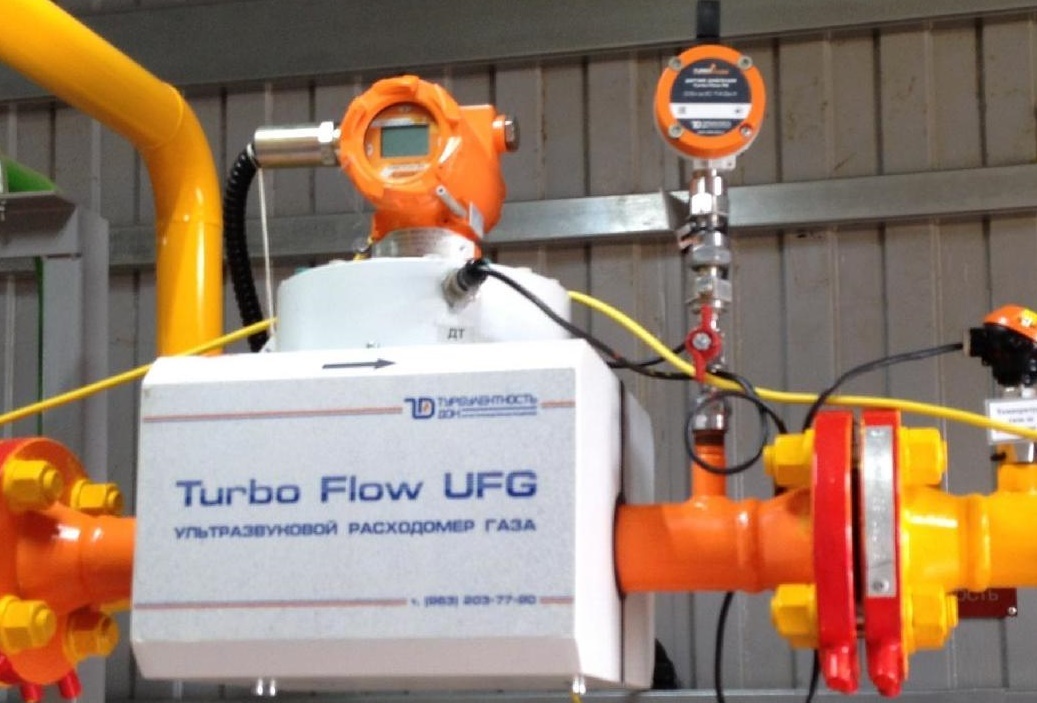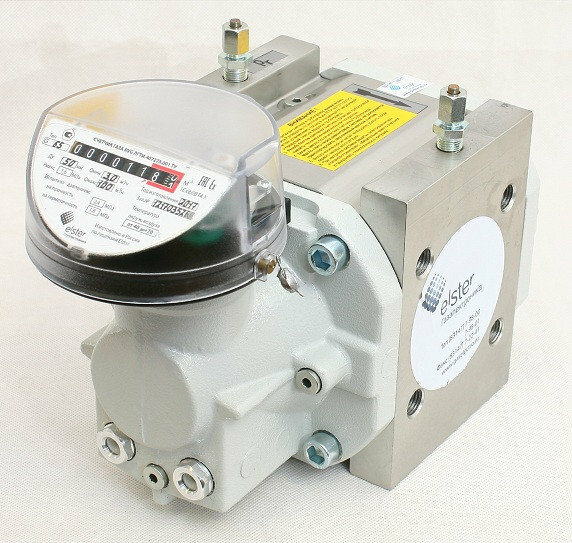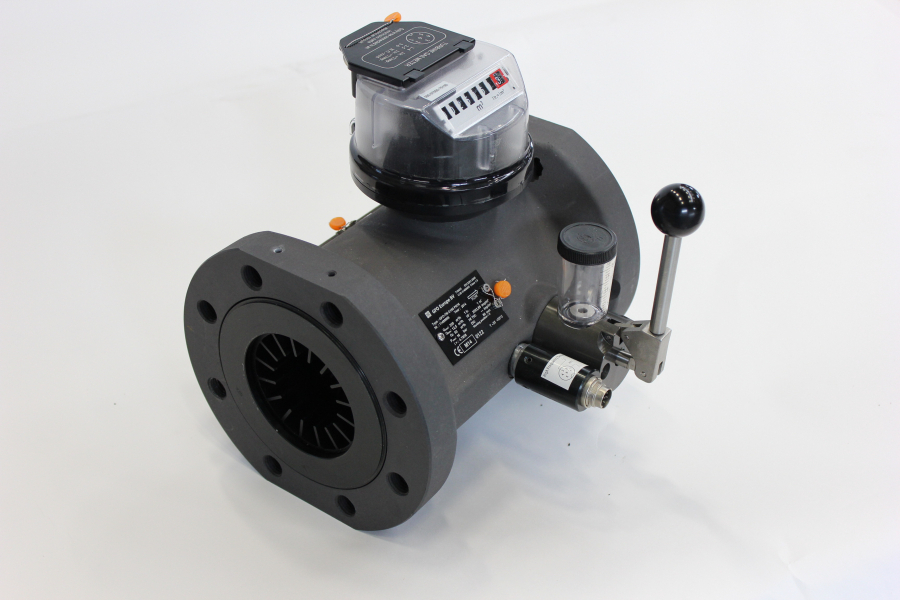A flow meter is a device for measuring the volumetric or mass flow rate of a substance, including natural gas, combustible, corrosive gases, and air separation products. Calculation of flow volumes at industrial enterprises or in everyday life can be performed without the involvement of specialists.
Next, we will tell you how and what the gas is measured in, give a description of the devices that are used for this purpose, and also consider the main methods for determining the gas flow rate.
The content of the article:
- Direct method of measuring gas consumption
-
Indirect measurement methods
- Differential pressure gas flow measurement
- High-speed method of determining costs
- Ultrasonic measurement method
-
Flowmeter classification according to the principle of operation
- Type # 1 - jet flow meters
- Type # 2 - vortex flow meters
- Type # 3 - ultrasonic flow meters
- Type # 4 - drum flow meters
- Type # 5 - levitation devices
- Type # 6 - membrane meters
- Type # 7 - rotary instruments
- Type # 8 - Turbine Meters
- Instruments for measuring the amount of gas
- Conclusions and useful video on the topic
Direct method of measuring gas consumption
The gas volume is calculated in cubic meters, less often other mass units are used, such as tons or kilograms, as a rule, for process gases.
The direct method is the only method that provides a direct measurement of the volume of passing gas.
The weaknesses of devices that calculate the volumetric or mass flow rate of a substance include:
- Limited performance of flow meters in contaminated gas conditions.
- There is a high likelihood of breakage due to partial blockage of flow or pneumatic shock.
- The high cost of rotary meters compared to other devices.
- Large dimensions of the devices.
The numerous advantages of this method overlap the listed disadvantages, due to which it has become the most widespread in terms of the number of installed counters.

Using a flow meter, you can calculate the volume or mass of a substance per unit of time. Installation on an inclined section of the pipeline will reduce the measurement error
Among them is the direct measurement of the gas volume, the absence of dependence on the distortion of the flow rate graph, both at the inlet and at the outlet, which makes it possible to reduce UUG. The width of the range is up to 1: 100. For this purpose, devices of the membrane and rotary type are used. They can be used in rooms with installed impulse boilers.
Indirect measurement methods
These methods involve calculating, for example, the flow rate of a substance through a given cross-sectional area. To obtain the most accurate results, it is necessary to equalize the gas velocity.
Differential pressure gas flow measurement
One of the most common and well-studied gas flow methods, the orifice-based method has several advantages, including simplicity. flow transducer mechanism, the action of which is aimed at measuring the pressure drop of a substance flowing through a local constriction in a gas pipeline. For calculations, you will not need flow meters stands.
Despite the presence of a complete scientific and technical base, this measurement method has several significant disadvantages. - small measuring range, which, even with multi-limit pressure sensors, does not exceed the value 1:10.

Standard tapered devices are manufactured using a special technology with high roughness requirements. They can be used exclusively on smooth pipelines.
Hydraulic resistance in gas pipelines increase the sensitivity to the graph of changes inaverage velocities in depth or width of the flow at the entrance to the diaphragm. The length of straight sections in front of the constriction devices must be at least 10 diameters DN of the pipe structure.
High-speed method of determining costs
For this method, turbine-type converters are used. These devices have several advantages, including small size and weight, and an affordable price in their category.
These devices are not sensitive to pneumatic shock. The range of flow measurement values is up to 1:30, which is significantly higher than the same indicator for orifice devices.

TPR turbine flow transducer can be used in an environment at temperatures from minus 200 to +200 ° С, if the device is installed for non-aggressive and single-phase cryogenic liquids. For aggressive liquids, the indicator will be from minus 60 to +50 ° С
The disadvantages include the sensitivity, albeit insignificant, to flow distortions at the inlet and outlet of the device, deviation of the results of measurements of pulsating gas flows. At low flow rates, in the range from 8 to 10 m3/ h, flow meters are inoperative.
Ultrasonic measurement method
The popularity of acoustic flow meters that measure the amount of gas, especially in commercial accounting, has increased with the development of microelectronics. There are no moving parts in acoustic flow meters, as well as parts protruding into the flow, which significantly increases their reliability.
The measurement is carried out in a wide range of values due to the device's ability to operate for a long time from the built-in power source. Domestic devices do not meet all the necessary requirements, since in order to avoid the influence of distortion gas flow for the calculation results, it is necessary to use exclusively multibeam ultrasonic flow meters.
Flowmeter classification according to the principle of operation
Flowmeters differ in several parameters, including pressure, type of gas used, temperature conditions. The device should be chosen depending on the conditions of use, as well as the tasks.
Gauges consist of parts such as a differential pressure transducer, a connecting piece and a pressure gauge.
Type # 1 - inkjet autogenerator flow meters
A flow meter of this type, which is also intended for measuring the flow rate of natural gas, has several distinctive characteristics. The device is engulfed in negative feedbacks, the frequency of jet connections depends on the gas flow rate.
Meters produced on the basis of jet flow meters are used for commercial metering without preliminary examination.

1 - jet element; 2 and 3 - converters; 4 - signal extraction device; 5 - power nozzle; 6 - working chamber; 7 and 8 - walls of the working chamber; 9 - separator; 10 and 11 - control nozzles; 12 and 13 - receiving channels; 14 and 15 - drain channels; 16 and 17 - feedback channels; 18 - expansion of the supply nozzle; 19 - ledge on the supply nozzle
Jet flow meter autogenerator type is prone to clogging, among its disadvantages is also the instability of the conversion rate.
These devices have similar disadvantages to vortex devices:
- dependence on distortions of the speed graph, provided that it is used in conjunction with narrowing devices;
- massive head losses are irreversible;
- the main part of the flow meter has huge dimensions;
- significant volatility of the conversion rate.
Advantages autogenerator flow meters do not differ from a vortex device, except for the ability to work with contaminated gases. These meters are not widely used in custody transfer metering.
Type # 2 - vortex flow meters
There are several strengths of the instruments, including the accuracy of the measurements performed, the lack of sensitivity to dirt and pneumatic shock, ease of use, the device also lacks moving parts.

The devices withstand the most difficult external conditions, the accuracy of the indicators is guaranteed at an ambient temperature of up to 500 degrees Celsius, the maximum pressure level is 30 MPa
There are also known significant disadvantages of using this type of flow meters - increased sensitivity to mechanical vibrations, pressure drop. Pipe diameter should be in the range of 15-30 cm.
Type # 3 - ultrasonic flow meters
The device, also known as an acoustic device, has several undeniable advantages:
- lack of hydraulic resistance;
- there are no moving parts in the device, which enhances its reliability;
- increased strength of the mechanism;
- fast action.
A flowmeter of this type is based on the determination of the difference in transit time.

Ultrasonic flow meters are independent of temperature, ambient pressure, viscosity, and conductivity to ensure accurate readings
Ultrasonic sensors, located diagonally relative to each other, function as a receiver and emitter. The use of several channels compensates for the deformation of the flow profile.
Type # 4 - drum flow meters
This category of devices is used, as a rule, for laboratory research. The pressure generated during the rotation of the drum leads to the filling of the section with gas and their subsequent emptying.

For the full operation of drum counting mechanisms (without a pulse generator), a constant power source is not needed, which is their indisputable advantage
The number of revolutions of the drum is proportional to cubic units of gas, the indicator is transmitted to the dial of the counting structure. Drum flow meters have high measurement accuracy.
Type # 5 - levitating devices
The moving part of the tachometer device rotates in bearings, the speed is equal to the volumetric gas flow rate. The transformation of the speed of a circular movement into an electrical signal is carried out using a secondary converter, the results are reflected on the indicator.

Levitation metering devices operate in conditions from -30 to +50 degrees Celsius, the error of values is in the range of ± 1.5%
Levitating devices are in demand in the commercial metering of natural gas consumption, both for domestic and municipal purposes.
Type # 6 - membrane meters
A patent for the manufacture of one of the most common metering devices for measuring gas was issued in the second half of the nineteenth century in England.
The principle of operation of a mechanical flow meter is based on a change in the position of movable chamber membranes at the moment of gas flow. Alternating movement is carried out during the inlet and outlet of the substance.

Membrane-type gas metering device can consist of 2 or 4 chambers, depending on the volume of the measured substance and design
The counting device drives the gearbox and levers system. The mechanisms have a wide range of values for measurements - up to 1: 100.
Type # 7 - rotary instruments
In a mechanical device, two rotors are located in the measuring chamber, which begin to move under the pressure of the substance. The rotating parts are located at right angles to each other, their initial location is fixed by means of synchronizing wheels.
The amount of gas is proportional to the number of revolutions of the rotors. With the help of a magnetic coupling and a gearbox, the rotation of the rotor is transmitted to the calculating device, which is responsible for the accumulation of the volume of the passed substance.

The rotary flowmeter has a large throughput, is used in public utilities, enterprises of medium and small volumes for gas consumption
The main advantages of rotary flowmeters include high measurement accuracy, compactness of the device, and a wide range of flow measurements. Among the disadvantages are the noise of the mechanism, its high cost, sensitivity to external factors, including pollution.
Type # 8 - Turbine Meters
The mechanical-type device has the shape of a pipe segment; a turbine with a shaft and moving supports is located inside the flow meter. The force device moves due to the substance passing through the measuring chamber.
The speed of movement of the mechanism is equal to the flow rate and the gas flow rate. The accumulated volume is reflected on the counting mechanism, the transfer to it is carried out mechanically using a gearbox, a system of gears.

The turbine counting device can only be used with clean propellants - gas, liquid or steam in suspension, provided that they do not contain solid particles
In addition to these, there are other devices, but they are used, as a rule, in scientific research. In the commercial sphere, they are practically not involved.
We also recommend reading our other article, where we talked in detail about how to choose a gas meter for your home. More details - go to link.
Instruments for measuring the amount of gas
According to the method of calculation, devices for measuring gas consumption are divided into several categories. Velocity is used to determine the volumetric number of the investigated medium. These devices do not have measuring chambers. A sensitive detail is turbine (tangential or axial), which is driven into rotation by the flow of matter.
Volumetric meters are less dependent on the type of product. Their disadvantages include the complexity of the design, high price and impressive dimensions. The device consists of several measuring chambers and has a more complex design. This type of devices is divided into several types - piston, blade, gear.
There is also another classification of gas meters, which includes three types of devices: rotary, drum and valve.
Rotary meters have a large flow capacity. Their action is based on calculating the number of revolutions of the blades inside the device, the indicator corresponds to the volume of gas. Their main advantages include durability, independence from electricity, increased resistance to short-term overloads.

Drum-type gas meters work on the principle of displacement. Correction factors such as temperature, gas composition and humidity level are not taken into account.
Drum meters consist of a body, a counting mechanism and a drum with measuring chambers. The principle of operation of the device for measuring gas consumption consists in determining the number of revolutions of the drum, which rotates due to the pressure difference. Despite the accuracy of the calculations, this type of device has not found wide application due to its cumbersome size.
The principle of operation of the latter type of meters, known as valve meters, is based on the movement of a movable partition, on which the difference in pressure of the substance acts. The device consists of several parts - a counting and gas distribution mechanism, as well as a housing. It has large dimensions, therefore, it is mainly used in everyday life.
Conclusions and useful video on the topic
How vortex gas flow meters work will be discussed in the following video:
Gas flow measurement is one of the key tasks in production. There are a huge number of devices on the flow meter market with various designs and operating principles that are also suitable for domestic needs. With their help, you can determine almost any amount of liquid or gas, and you do not need a special calibration standard installation.
You can supplement our material with interesting information on the topic of the article, ask questions of interest or participate in the discussion. Leave your comments in the block below.


